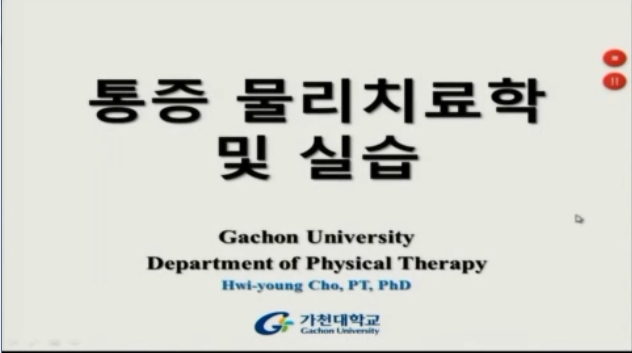While prenouns are categorized into “attributive, demonstrative, and numeral prenouns,” uninflected words are divided into “nouns, pronouns, and numerals.” Nouns, pronouns, and numerals develop into attributive, demonstrative, and numeral pren...
http://chineseinput.net/에서 pinyin(병음)방식으로 중국어를 변환할 수 있습니다.
변환된 중국어를 복사하여 사용하시면 됩니다.
- 中文 을 입력하시려면 zhongwen을 입력하시고 space를누르시면됩니다.
- 北京 을 입력하시려면 beijing을 입력하시고 space를 누르시면 됩니다.

관형사의 하위분류 -인칭/의문·부정 관형사의 설정- = A Study on the Subclassification of Prenouns -Set-up of Personal/Interrogative·Indefinite Prenouns-
한글로보기https://www.riss.kr/link?id=A106410257
- 저자
- 발행기관
- 학술지명
- 권호사항
-
발행연도
2015
-
작성언어
-
- 주제어
-
KDC
700
-
등재정보
KCI등재
-
자료형태
학술저널
- 발행기관 URL
-
수록면
207-232(26쪽)
-
KCI 피인용횟수
3
- DOI식별코드
- 제공처
- 소장기관
-
0
상세조회 -
0
다운로드
부가정보
다국어 초록 (Multilingual Abstract)
“내, 네, 제, and 뉘,” which are prenominal forms of pronouns, are treated as prenouns since they went through historical form changes. “우 리 and 저희” are treated also as prenouns since they modify uninflected words meaning intimate relations. “너네 and 얘네/걔네/쟤네” are personal prenouns that modify uninflected words of intimate relations, as well. “네 까짓 and 제까짓” are personal prenouns that modify bound nouns and add despising meanings to them.
The demonstrative prenouns in the line of “이/그/저” are in charge of such semantic functions as “close, middle, and distant proximity,” whereas interrogative·indefinite prenouns are in charge of “interrogative·indefinitive” semantic functions, which means that interrogative·indefinite prenouns should be put in a different category from demonstrative ones. Some interrogative·indefinite prenouns including “무슨, 뭔, 웬, and 어쩐” have their meanings expanded from “interrogation” and thus express the meanings of modality.
While prenouns are categorized into “attributive, demonstrative, and numeral prenouns,” uninflected words are divided into “nouns, pronouns, and numerals.” Nouns, pronouns, and numerals develop into attributive, demonstrative, and numeral prenouns, respectively. Pronouns are classified into personal, demonstrative, and interrogative·indefinite pronouns, which means that the prenouns that have developed from pronouns should be further classified into “personal, demonstrative, and interrogative·indefinite prenouns.”
“내, 네, 제, and 뉘,” which are prenominal forms of pronouns, are treated as prenouns since they went through historical form changes. “우 리 and 저희” are treated also as prenouns since they modify uninflected words meaning intimate relations. “너네 and 얘네/걔네/쟤네” are personal prenouns that modify uninflected words of intimate relations, as well. “네 까짓 and 제까짓” are personal prenouns that modify bound nouns and add despising meanings to them.
The demonstrative prenouns in the line of “이/그/저” are in charge of such semantic functions as “close, middle, and distant proximity,” whereas interrogative·indefinite prenouns are in charge of “interrogative·indefinitive” semantic functions, which means that interrogative·indefinite prenouns should be put in a different category from demonstrative ones. Some interrogative·indefinite prenouns including “무슨, 뭔, 웬, and 어쩐” have their meanings expanded from “interrogation” and thus express the meanings of modality.
참고문헌 (Reference)
1 황문환, "현대국어 관형사의 어휘사적 고찰" 규장각한국학연구원 (29) : 1-19, 2002
2 이은섭, "현대 국어 의문사의 문법과 의미" 태학사 2005
3 이수미, "현대 국어 관형사 연구" 연세대학교 대학원 2008
4 최종원, "한국어 지시 관형사의 통합 관계 연구" 울산대학교 대학원 2012
5 이선웅, "한국어 문법론의 개념어 연구" 월인 2012
6 이익섭, "한국어 문법" 서울대학교출판부 2005
7 김선효, "한국어 관형어 연구" 역락 2011
8 리광, "한국어 관형사의 하위분류에 대하여" 길림성민족사무위원회 (181) : 38-45, 2012
9 안병희, "한국문화사대계 Ⅴ: 언어·문학사(상)" 고대 민족문화연구소 출판부 165-261, 1987
10 남기심, "표준 국어문법론" 탑출판사 1993
1 황문환, "현대국어 관형사의 어휘사적 고찰" 규장각한국학연구원 (29) : 1-19, 2002
2 이은섭, "현대 국어 의문사의 문법과 의미" 태학사 2005
3 이수미, "현대 국어 관형사 연구" 연세대학교 대학원 2008
4 최종원, "한국어 지시 관형사의 통합 관계 연구" 울산대학교 대학원 2012
5 이선웅, "한국어 문법론의 개념어 연구" 월인 2012
6 이익섭, "한국어 문법" 서울대학교출판부 2005
7 김선효, "한국어 관형어 연구" 역락 2011
8 리광, "한국어 관형사의 하위분류에 대하여" 길림성민족사무위원회 (181) : 38-45, 2012
9 안병희, "한국문화사대계 Ⅴ: 언어·문학사(상)" 고대 민족문화연구소 출판부 165-261, 1987
10 남기심, "표준 국어문법론" 탑출판사 1993
11 김원경, "체언 수식 부사의 범주와 자질" 한국중원언어학회 (29) : 27-52, 2013
12 이현희, "중세국어 내적 화법의 성격" 한신대학교 (3) : 1986
13 최현배, "우리말본" 정음문화사 1961
14 김주상, "용언 활용형에서 기원한 관형사 연구" 서울대학교 대학원 2010
15 이수미, "새로운 유형의 관형사 설정에 관한 연구" 한말연구학회 (24) : 165-194, 2009
16 서상규, "부사와 관형사" 국립국어연구원 15 (15): 2005
17 정희정, "대명사, ≪왜 다시 품사론인가?≫" 커뮤니케이션북스 29-59, 2006
18 남경완, "굳은 관형사형의 유형별 처리 방안 연구" 한국어의미학회 22 : 25-45, 2007
19 서정수, "국어문법" 집문당 2013
20 유현경, "국어 형용사 연구" 한국문화사 1998
21 왕문용, "국어 문법론의 이해" 개문사 1995
22 서종학, "국어 대명사의 체계화 재고" 인문과학연구소 (65) : 1-24, 2012
23 최유택, "국어 관형어 연구" 충남대학교 2014
24 장영희, "국어 관형사의 범주와 기능" 한국어의미학회 (8) : 201-220, 2001
25 서형국, "국어 관형사의 문법사 연구 시론" 국어사학회 (10) : 199-231, 2010
26 이정택, "관형사의 품사설정 문제" 한말연구학회 (13) : 167-187, 2003
27 최웅환, "관형사의 문법적 특징 -관형사의 품사설정과 규정-" 한국어문학회 (121) : 107-136, 2013
28 황화상, "관형사와 부사의 품사 설정에 대하여 - 이른바 체언 수식 부사를 중심으로 -" 한국어학회 42 : 317-344, 2009
29 우형식, "관형사, ≪왜 다시 품사론인가?≫" 커뮤니케이션북스 195-226, 2006
30 배진영, "관형사 범주 설정에 대한 논의 - 체언 수식 용언 활용형을 중심으로 -" 국어교육학회(since1969) (47) : 165-188, 2010
31 유현경, "관형사 ‘한’에 대한 연구" 국어학회 (53) : 65-86, 2008
32 최홍열, "性狀冠形詞의 範疇 設定에 관한 一考察" 중앙어문학회 (59) : 85-122, 2014
33 유창돈, "冠形詞史 考究: 李朝語 語彙史" 국어국문학회 (30) : 1-20, 1965
34 이광호, "‘므스’와 ‘므슥/므슴/므슷’의 의미특성 및 형태변화" 국어국문학회 (151) : 35-58, 2009
35 허웅, "20세기 우리말의 형태론" 샘문화사 1995
동일학술지(권/호) 다른 논문
-
체언 어간말 ‘>오’ 변화에 대하여 -중부 방언을 중심으로-
- 국어학회
- 소신애 ( So Shin-ae )
- 2015
- KCI등재
-
- 국어학회
- 정한데로 ( Jung Handero )
- 2015
- KCI등재
-
- 국어학회
- 오윤경 ( O Yune-kyung )
- 2015
- KCI등재
-
- 국어학회
- 이한민 ( Lee Han-min )
- 2015
- KCI등재
분석정보
인용정보 인용지수 설명보기
학술지 이력
| 연월일 | 이력구분 | 이력상세 | 등재구분 |
|---|---|---|---|
| 2023 | 평가예정 | 계속평가 신청대상 (등재유지) | |
| 2018-01-01 | 평가 | 우수등재학술지 선정 (계속평가) | |
| 2015-01-01 | 평가 | 등재학술지 유지 (등재유지) |  |
| 2011-01-01 | 평가 | 등재학술지 유지 (등재유지) |  |
| 2009-01-01 | 평가 | 등재학술지 유지 (등재유지) |  |
| 2006-01-01 | 평가 | 등재학술지 선정 (등재후보2차) |  |
| 2005-01-01 | 평가 | 등재후보 1차 PASS (등재후보1차) |  |
| 2004-01-01 | 평가 | 등재후보학술지 유지 (등재후보2차) |  |
| 2003-01-01 | 평가 | 등재후보 1차 PASS (등재후보1차) |  |
| 2002-01-01 | 평가 | 등재후보학술지 유지 (등재후보1차) |  |
| 1998-07-01 | 평가 | 등재후보학술지 선정 (신규평가) |  |
학술지 인용정보
| 기준연도 | WOS-KCI 통합IF(2년) | KCIF(2년) | KCIF(3년) |
|---|---|---|---|
| 2016 | 1.45 | 1.45 | 1.47 |
| KCIF(4년) | KCIF(5년) | 중심성지수(3년) | 즉시성지수 |
| 1.41 | 1.52 | 2.572 | 0.28 |




 KISS
KISS




